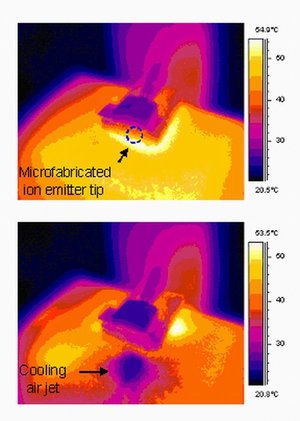 | University of Washington, Infrared images show how a new UW micro-pump cools a heated surface: (Top) The air pump is off. (Bottom) The air pump is on. highest resolution version of this photo (print ready). |
Honeycomb Network Comprised of Anthraquinone Molecules, Molecules spontaneously form honeycomb network featuring pores of unprecedented size
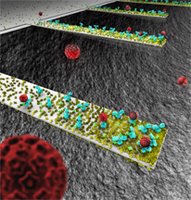 | This rendition depicts an array of tiny, diving-boardlike devices called nanocantilevers. The devices are coated with antibodies to capture viruses, which are represented as red spheres. |
Nanocantilevers High Resolution Image. FULL TEXT 'Nanocantilevers' yield surprises critical for designing new detectors.
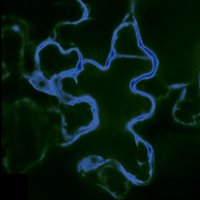 | This false-color image shows a cell from the epidermis of an Arabidopsis thaliana plant; the cell has been marked with fluorescent imaging sensors designed to detect the sugar glucose. |
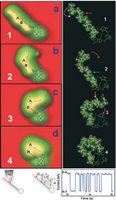 | Nanoscientists Create Biological Switch from Spinach Molecule, Scientists used a scanning tunneling microscope to manipulate chlorophyll-a into four positions. art by: Saw-Wai Hla, Tuesday Sep 05, 2006, by Andrea Gibson. FULL TEXT Nanoscientists Create Biological Switch from Spinach Molecule |
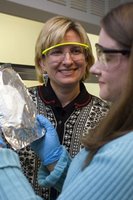 | Jamie Mullally '07, right, a Cornell Presidential Research Scholar, and Margaret Frey, assistant professor of textiles and apparel, examine a nonwoven nanofiber fabric on aluminum foil backing. Mullally will complete an honors thesis on the biorecognition fabrics in spring '07. Copyright © Cornell University. FULL TEXT, Biodegradable napkin, featuring nanofibers, may detect biohazards |
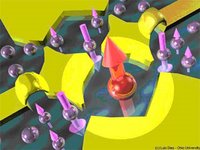 | Nanoscale metallic electrodes (in yellow) can be used to confine electrons in small regions, forming quantum dots. Two quantum dots connected to each other form a double quantum dot. |
 | Based on a new theory, MIT scientists may be able to manipulate carbon nanotubes -- |
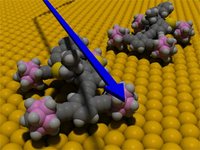 | This animation depicts two motorized nanocars on a gold surface. The nanocar consists of a rigid chassis and four alkyne axles that spin freely |
 | Caption: In NIST's Einstein-de Haas experiment. |
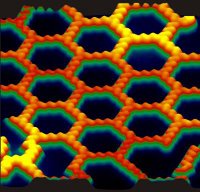



No comments:
Post a Comment